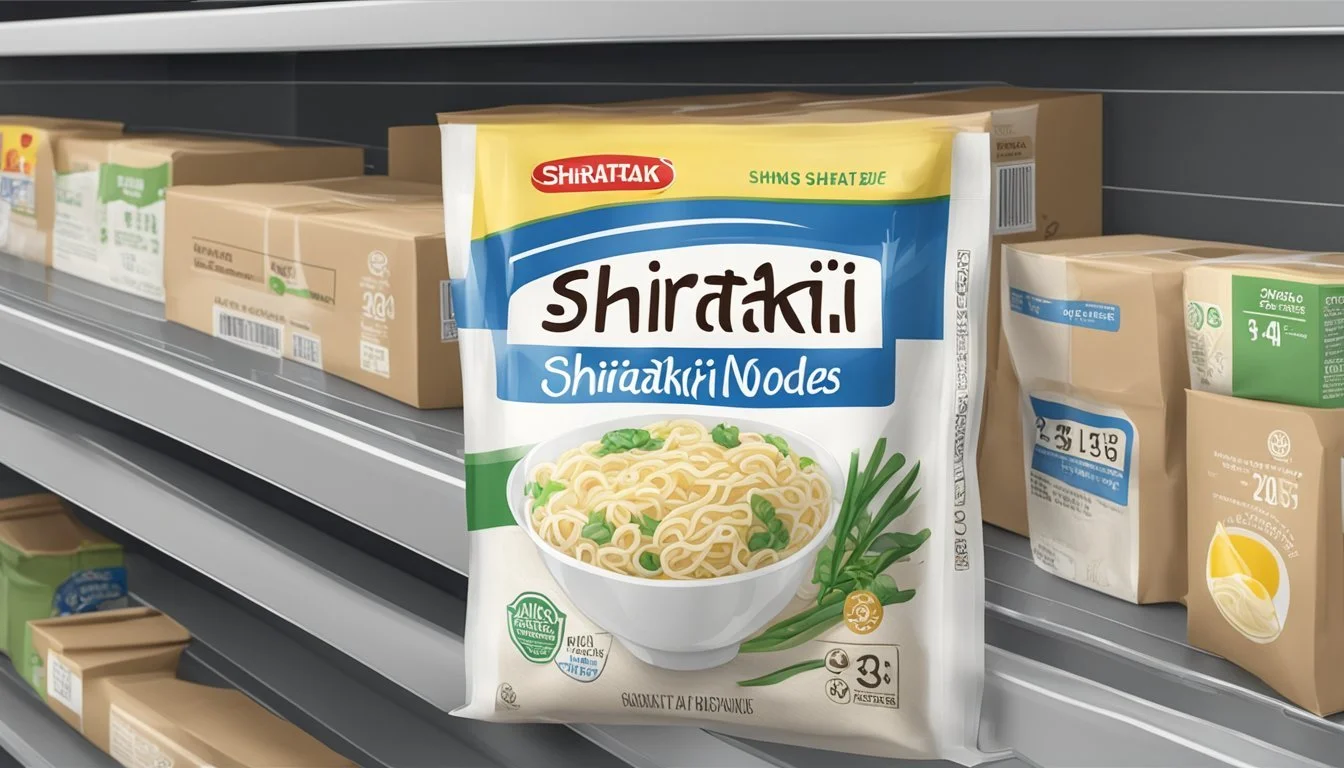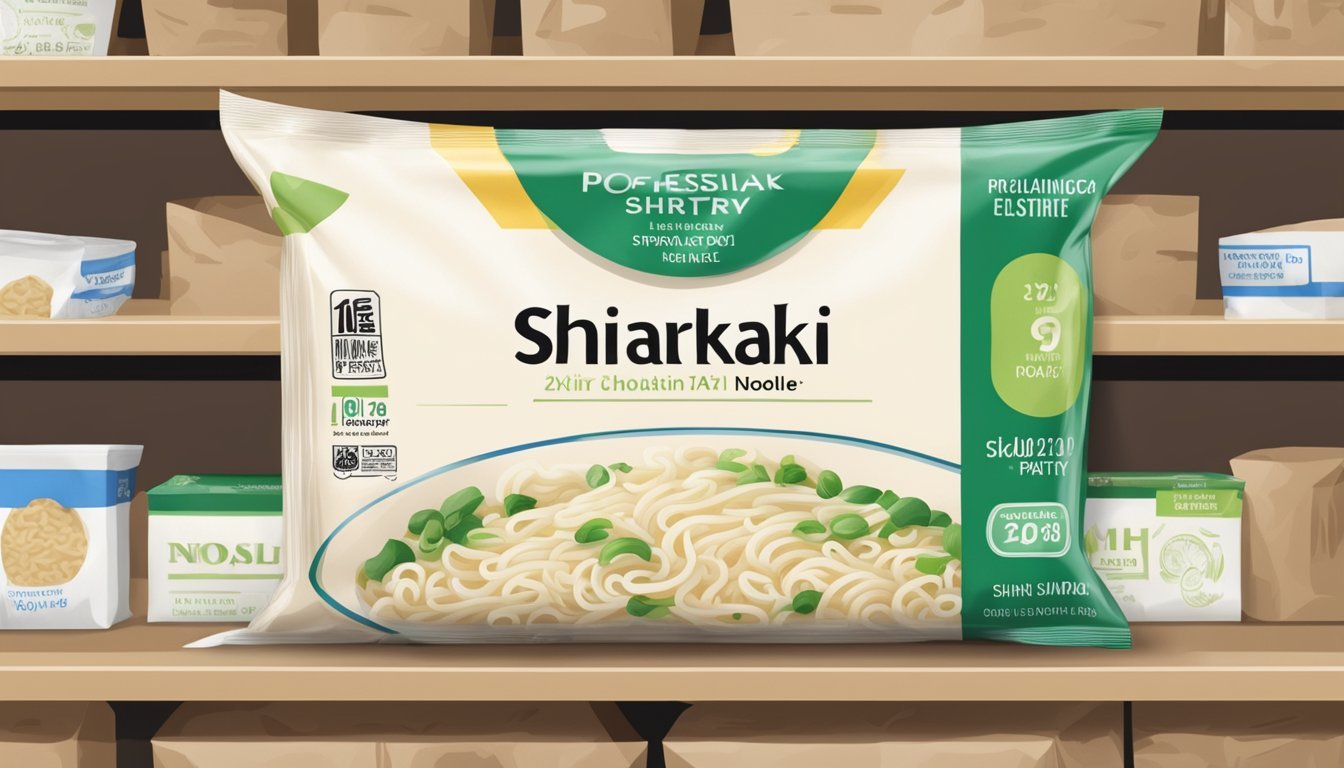How Long Do Shirataki Noodles Last?
Uncovering Shelf Life and Storage Tips
Shirataki noodles (how long does shirataki noodles last?) have become a popular alternative to traditional pasta due to their low calorie and carbohydrate content. Made from the konjac plant, these translucent noodles have a unique texture and are often considered a staple in low-carb and ketogenic diets. Their longevity is equally impressive, as shirataki noodles boast a considerable shelf life that makes them a convenient pantry item.
Unopened shirataki noodles typically maintain their quality for up to 12 months, a feature attributed to their packaging and preservative-free nature. Consumers are encouraged to store these noodles in a cool, dry place but refrigerating them can extend their freshness. Once opened, however, shirataki noodles should be consumed within a few days to ensure both their taste and textural integrity.
Overview of Shirataki Noodles
Shirataki noodles have become notable for their unique properties, being rich in soluble fiber and low in calories and carbs. They serve as a popular alternative for those adhering to specific dietary preferences and health goals.
Origin and Cultural Significance
Shirataki noodles, also known as konjac noodles, originated in Japan. They have been a traditional food staple in Asian cuisine for centuries, prized for their versatile use and minimal caloric content. Their name translates to "white waterfall," reflecting the noodles' translucent appearance.
What Are Shirataki Noodles Made Of?
Shirataki noodles are primarily made from the konjac plant's root, which contains glucomannan, a type of dietary fiber. A typical composition is 97% water and 3% glucomannan fiber, and they may also include tofu to enhance their nutritional value. Unlike typical noodles, they are free of flour or grain.
Health Benefits and Nutritional Profile
Due to their high fiber content, shirataki noodles can aid in weight loss, help maintain healthy blood sugar levels, and improve cholesterol. They are beneficial for digestion and can relieve constipation. The glucomannan fiber acts as a prebiotic, supporting gut health.
Nutritional profile per serving:
Calories: <10
Carbs: <1g net carbs
Protein: 0-1g
Fiber: 2-3g
Culinary Uses
Shirataki noodles are highly adaptable in cooking. They can be used in a variety of dishes such as soups, stir-fries, pasta dishes (What wine goes well with pasta dishes?), and even as a substitute in rice-based meals. Their ability to absorb flavors makes them ideal for pairing with numerous sauces and seasonings.
Comparison to Other Noodle Types
Compared to traditional pasta, rice, or noodles, shirataki contains minimal calories and carbohydrates, making them suitable for low-carb, gluten-free, and keto diets. Their texture and taste differ; they are more gelatinous and less flavorful, which is why they are often used in dishes with robust sauces.
Purchasing and Availability
Shirataki noodles are widely available at health food stores, Asian markets, and large retail chains like Whole Foods and Walmart. They come in various forms, such as spaghetti, fettuccine, and angel hair. The price is comparatively higher than standard pasta but justifiable by their dietary benefits.
Available forms:
Shirataki spaghetti
Fettuccine
Angel hair
Rice (konjac rice)
Ready to eat meals
Common places to purchase:
Health food stores
Asian markets
Retail chains (e.g., Whole Foods, Walmart)
Shelf Life and Storage
When it comes to shirataki noodles, understanding the nuances of shelf life and the correct storage methods ensures maximum quality and safety. These noodles have particular storage needs and indicators of spoilage that consumers should be aware of.
Shelf Life Considerations
Shirataki noodles, especially brands like Miracle Noodle, are known for their extended shelf life due to their unique composition. Unopened, they have a shelf life of up to 12 months, and the expiration date is often prominently displayed on the packaging. Once opened, it's advised to consume them within 3-5 days for the best experience and safety.
Proper Storage Methods
To maintain optimal freshness, unopened shirataki noodles should be stored in a cool, dry place, and many consumers choose to keep them in the refrigerator. For opened packages, submerging the noodles in water in an airtight container in the refrigerator is recommended. The water should be changed daily to prevent spoilage.
Freezing and Thawing
Freezing shirataki noodles is an option to further extend their shelf life. Packaged noodles can be frozen for up to two months. When it's time to use them, thaw the noodles in the fridge before reheating. It is possible to microwave the noodles after thawing to restore warmth and consistency.
Signs of Spoilage
Spoilage can be identified by changes in smell, texture, and color. A fishy odor is a common indicator that shirataki noodles are no longer safe to consume. Likewise, if the noodles display an unusual color or have become excessively slimy or mushy in texture, they should be discarded.
Preparation and Cooking Tips
When considering shirataki noodles, it is essential to understand that the preparation process greatly affects the final texture and flavor outcome. Proper initial preparation and cooking methods can significantly enhance the eating experience of these versatile noodles.
Initial Preparation
To prepare shirataki noodles for cooking, first rinse them thoroughly under cold water to eliminate the natural odor they possess. This step also helps to remove any residual liquid that may be included in the packaging. After rinsing, these noodles benefit from boiling for several minutes, which can help reduce their naturally rubbery texture.
Cooking Methods
Shirataki noodles are highly adaptable and can be cooked using a variety of methods. They can be boiled just until heated through, typically for 2 to 3 minutes. Alternatively, for a firmer texture, they can be fried in a pan without oil, as they do not absorb fat like traditional pasta. This method can impart a more pleasing texture that's less rubbery.
Enhancing Flavor and Texture
These noodles are very similar to tofu in their ability to absorb the flavors they're cooked with. For an enhanced taste profile, simmer the noodles in a flavored broth or sauce that complements your recipe. One can also mix in a dash of soy or olive oil. To upgrade texture, cook noodles in a dry skillet post-boiling to remove excess water and concentrate flavors.
Incorporating into Dishes
Shirataki noodles are a gluten-free alternative, making them suitable for various recipes. They work well as replacements in pasta dishes, including macaroni or pad thai. They can be used as a base for a stir fry and tossed with vegetables and protein, soaking up sauces and seasonings along the way.
Dining and Serving Suggestions
When serving, consider the plating and how shirataki noodles complement the rest of the meal. They should be presented as one would any pasta dish, keeping in mind that their neutral taste profile makes them an excellent canvas for the accompanying elements of the dish.
Seasoning and Condiments
Since shirataki noodles have little flavor on their own, they rely on seasoning and condiments for palatability. Simple seasonings such as salt and sugar can enhance their taste, while soy sauce, rich broth, or a drizzle of high-quality olive oil can bring a new dimension to the noodles. These additions should be tailored to match the intended flavor profile of the overall dish.
Health Considerations
When evaluating shirataki noodles from a health perspective, it's essential to consider individual dietary needs, such as allergies and compatibility with certain diets, as well as their impact on blood sugar levels, digestive health, and their role in weight management.
Allergies and Sensitivities
Shirataki noodles are typically soy-free and gluten-free, making them a suitable choice for individuals with soy or gluten sensitivities. However, as with any food product, it's advisable to check for specific allergens in the production facility, especially if there's a known hypersensitivity.
Diet Compatibility
Shirataki noodles are highly compatible with a variety of diets. They are virtually carbohydrate-free, aligning with keto and low-carb dietary patterns. Additionally, being plant-based means they fit vegan diets, and the low calorie count supports caloric-restriction regimens.
Impact on Blood Sugar and Digestion
The primary component of shirataki noodles is glucomannan, a type of dietary fiber that can help stabilize blood sugar levels by slowing carbohydrate absorption. This can be particularly beneficial for those managing diabetes. Furthermore, glucomannan enhances digestion by acting as a prebiotic.
Weight Management
The low-calorie nature and high fiber content of shirataki noodles can be advantageous for weight management. Fiber contributes to a feeling of fullness, which may help prevent overeating. Shirataki noodles can be a filling addition to a weight loss diet without adding a significant number of calories.
Digestive Health
Shirataki noodles contribute to digestive health due to their high fiber content. Regular consumption may help to alleviate constipation and promote regular bowel movements. The prebiotic properties of glucomannan fiber also support beneficial gut bacteria, promoting a healthier digestive system.
Frequently Asked Questions
This section addresses common inquiries about cooking, storing, health concerns, and purchasing options for shirataki noodles.
FAQ: Cooking Shirataki Noodles
Shirataki noodles, made from konnyaku or glucomannan flour, require minimal cooking effort. They can be prepared quickly by rinsing under cold running water for 1-2 minutes to neutralize the flavor and then boiling for 2-3 minutes before adding to a recipe. These noodles are a suitable noodle replacement for those on keto, gluten-free, or vegan diets due to their low calorie and high fiber content.
FAQ: Storing and Shelf Life
Unopened shirataki noodles typically have an expiration date of 12 months and can be stored in a cool dry place or a refrigerator. After opening, it's best to consume them within 3-5 days. While they can last several months past the expiration date when unopened, always inspect the noodles upon opening for signs of spoilage. Freezing is not recommended as it can impact the texture.
FAQ: Health and Dietary Concerns
With 97% water and 3% glucomannan fiber, shirataki noodles are low in calories, making them an excellent choice for individuals with diabetes or those following a low-calorie diet. They are naturally gluten-free, vegan, and can be considered kosher when certified. Their high fiber content can also aid in digestion.
FAQ: Purchasing Options
Shirataki noodles can be purchased from various retailers, including Walmart, Whole Foods, and other stores offering health food selections. The price can vary based on the brand and quantity purchased. While shopping, consumers should compare products to ensure they are selecting the best option for their dietary requirements and budget preferences.
Conclusion
Shirataki noodles, known for their high fiber content and low-calorie count, have a relatively long shelf life compared to traditional pasta. When unopened and stored correctly, these noodles can remain edible for up to 12 months, often surpassing the expiration date marked on the package.
Storage Tips:
Unopened: Store in a cool, dry place or refrigerate for optimal freshness.
Opened: Refrigerate in a sealed container and consume within 3-5 days.
Consumers often ask if shirataki noodles are safe to eat after the expiration date. While they can be consumed past this date, it is imperative to inspect the noodles for any signs of spoilage, such as a foul odor or slimy texture.
Preparation Reminder:
Drain and rinse in a strainer under cold water for about 30 seconds.
Soak in cold water for 2-3 minutes then drain.
By adhering to proper storage and handling procedures, individuals can safely enjoy shirataki noodles and benefit from their nutritional value. It is always recommended to err on the side of caution and prioritize food safety.








